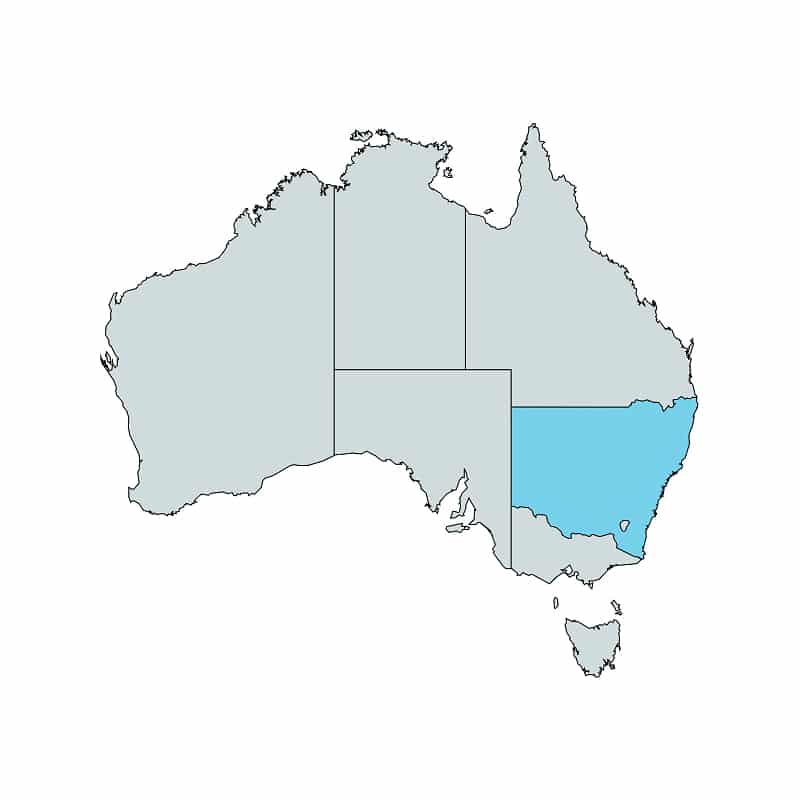Different Medicine is a property situated in Wallanbah, approximately 20km southeast of Gloucester, New South Wales. The property is a wildlife sanctuary and recreational site. The owner purchased the property with the goal of restoring the degraded habitat for the benefit of wildlife and plans to preserve the land in-perpetuity through a conservation covenant.
The property spans 99 hectares, with half comprised of subtropical rainforest and the remainder mostly populated by eucalypt woodland and grasslands.
The rainforest habitat features large fig trees, including rusty (Ficus rubiginosa) and small-leaved (Ficus obliqua var. obliqua) figs, python trees (Gossia bidwillii), tulip oaks (Argyrodendron peralatum), flame trees (Brachychiton acerifolius), red ash (Alphitonia excelsa), cabbage palms (Livistona australis), myrtles (Backhousia spp.), giant stinging trees (Dendrocnide excelsa), blue quandongs (Elaeocarpus reticulatus), staghorns (Platycerium superbum), elkhorns (Platycerium bifurcatum), grape vines (Cayratia eurynema), water vines (Cissus antarctica), rubber vines (Cryptostegia grandiflora) and at least ten species of native orchid.
The eucalypt woodland is dominated by tallowwood (Eucalyptus microcorys), white mahogany (E. acmenoides), grey gum (E. punctata), blue gum (E. saligna), turpentine (Syncarpia glomulifera subsp. glomulifera) and iron bark (E. siderophloia).
An abundance of wildlife is present on the property including koalas (Phascolarctos cinereus), pademelons, red-necked wallabies (Macropus rufogriseus), common (Trichosurus vulpecula) and mountain (Trichosurus cunninghami) brushtail possums, antechinuses, brush-tailed phascogales (Phascogale tapoatafa), short-beaked echidnas (Tachyglossus aculeatus), sugar (Petaurus breviceps) and feathertail (Acrobates pygmaeus) gliders, microbats, grey-headed flying-foxes (Pteropus poliocephalus) and native rats.
The property is also home to a range of reptiles including carpet pythons (Morelia spilota), red-bellied black snakes (Pseudechis porphyriacus), bandy-bandy snakes (Vermicella annulata), green (Dendrolaphis punctulata) and brown (Boiga irregularis) tree snakes, lace monitors (Varanus varius), eastern water dragons (Intellagama lesueurii), geckos, land mullets (Bellatorias major), pink-tailed lizards (Aprasia parapulchella) and jacky dragons (Amphibolurus muricatus).
An array of birdlife is also present including goshawks (Accipiter fasciatus), barn owls (Tyto alba), southern boobook (Ninox boobook) and barking (Ninox connivens) owls, tawny frogmouths (Podargus strigoides), channel-billed cuckoos (Scythrops novaehollandiae), pheasant coucals (Centropus phasianinus), brush turkeys (Alectura lathami), common koels (Eudynamys orientalis), nightjars, laughing kookaburras (Dacelo novaeguineae), superb lyrebirds (Menura novaehollandiae), wonga pigeons (Leucosarcia melanoleuca), Wompoo fruit doves (Ptilinopus magnificus), regent (Sericulus chrysocephalus) and satin bowerbirds (Ptilonorhynchus violaceus), Lewin’s honeyeaters (Meliphaga lewinii), red wattlebirds (Anthochaera carunculata), noisy friarbirds (Philemon corniculatus), yellow-faced (Lichenostomus chrysops) and white-eared (Lichenostomus leucotis) honeyeaters, rufous fantails (Rhipidura rufifrons), white-throated (Cormobates leucophaea) and brown (Climacteris picumnus) treecreepers, yellow (Zanda funerea) and red-tailed (Calyptorhynchus banksii) black cockatoos, olive-backed orioles (Oriolus sagittatus), green catbirds (Ailuroedus crassirostris), pardalotes (Pardalotus spp.), red-eared firetails (Stagonopleura oculata), yellow-throated scrubwrens (Sericornis citreogularis), noisy miners (Manorina melanocephala), king parrots (Alisterus scapularis) and eastern whipbirds (Psophodes olivaceus).



